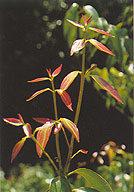
well the title comes from ondaatje's book of poetry and the poem of the same name. his poem evokes the sultry scent that would come from a cinnamon peeler and in turn his love. the images of the poem are amazing and thus prompted me to start a blog. in reality there have existed cinnamon peelers for centuries. the print above shows the cinnamon peelers harvesting the branches. like tea plantation workers and others in sri lanka, they lived in small communities during colonial times, spending their time harvesting the lucrative cinnamon crop for the portuguese, the dutch, the brits, and later the landed elites. there is a long history of cinnamon peelers rising up and leading revolts against their colonizers, famously against the dutch in the 1700s. sri lanka was long famed as the home of the world's best cinnamon, and it was this that initially lured the different travelers, merchants, and colonizers. when the portuguese arrived in 1536 they found a huge cinnamon forest on the west coast and made a bundle from harvesting and selling the spice. those hurt the most by the arrival of the europeans were the salagama, the traditional cinnamon peeling caste. as the demand for cinnamon grew, their living conditions and the demands made upon them worsened. during the british rule, the rates of mortality among the salagama soared. it became common practice for cinnamon peelers to register their children under names from other castes so that they could escape the life of cinnamon peeling.

Cinnamomum zeylanicum, the botanical name for cinnamon comes from the former name of sri lanka: ceylon. sri lanka remains the world's foremost producer of cinnamon, in terms of quantity and quality. from the cinnamon tree, the coarse outer bark can be ground into a powder that is dark brown, has a cinnamon aroma, but a flat, harsh taste. this powder is used in meat dishes and in other coarser dishes. what you know as cinnamon actually comes from the inner bark of the plant. this inner bark is carefully peeled from cut branches and rolled by cinnamon peelers into long quills that resemble giant cigars. the quills are cut into the familiar shorter cinnamon sticks. cinnamon peeling is a highly skilled technique that is still carried out by the salagama, who are quite separate from the cinnamon growers. the processes used are still highly traditional and non-mechanized. you can read more about the actual process at the spice of life; also you can buy best quality cinnamon straight from sri lanka through devi trading. be warned: much of what is passed off as cinnamon in the states is actually cassia, a much coarser plant from burma, which does not have the same delicate taste and aroma of true cinnamon.

the best cinnamon concoction i had in sri lanka was cinnamon and jaggery ice cream, yum! alas i never did meet a cinnamon peeler.


